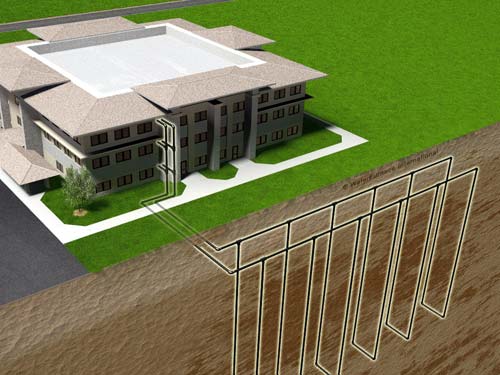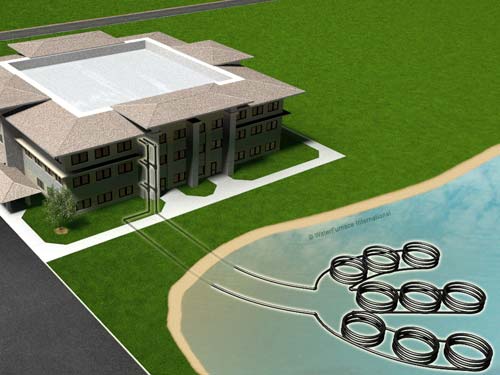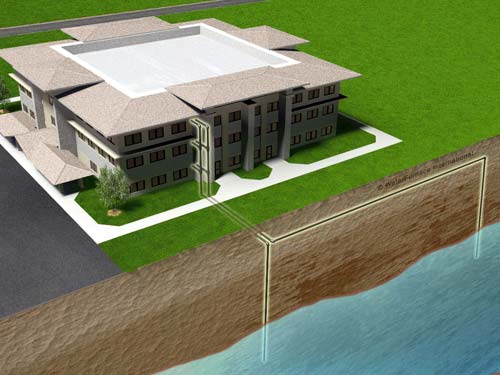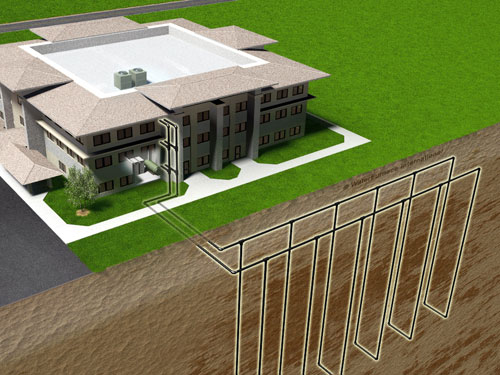WHAT IS A GEOTHERMAL SYSTEM?
Geothermal systems use a ground source heat pump that utilizes the earth's relatively constant temperature to provide heating, cooling, and hot water for homes and commercial buildings. Unlike other types of heating systems, which convert fuel to heat, a heat pump is designed to move heat from one place to another.
In the past, most heat pumps were the air-to-air or air source type. Air source heat pumps rely on outdoor air for their heat source. Geothermal heat pumps extract heat from the ground or from water, either below or on the surface. Because ground and ground water temperatures are a constant 7° - 13° C (45°-55°F) year-round, this type of system is much more efficient.
Facts on Earth Loops
Three Basic Geothermal Energy Sources
Closed-loop systems circulate a water-based solution through a "loop system " of small-diameter, high-density polyethylene underground pipes. Closed-loop systems can be installed horizontally, vertically or in a pond. Open-loop systems use an existing water well or surface water. Whether the system is open or closed, heat is transferred to or from the structure, regardless of outdoor temperature, to provide year-round comfort.

Vertical Loops
The ideal choice when available land surface is limited. Well drilling equipment is used to bore small-diameter holes from 100 to 400 feet deep.

Pond & Lake Loops
Very economical to install when a large body of water is available. Coils of pipe or a submersed heat exchanger are simply placed in the pond or lake.

Ground Water Systems
In ideal conditions, an open-loop application can be the most economical type of geothermal system - utilizing well water, lake, ocean or other water source as a direct energy source.

Boiler-Tower Systems
Typically, a boiler is employed to maintain closed loop temperatures above 60°F and a cooling tower to maintain loop temperatures below 90°F. These systems are applicable in medium to large buildings regardless of whether the load is heating or cooling dominated.

Hybrid Systems
Combines boiler tower and geothermal loop technologies to achieve optimal efficiencies, while meeting the challenges of both loop field space and budget constraints.